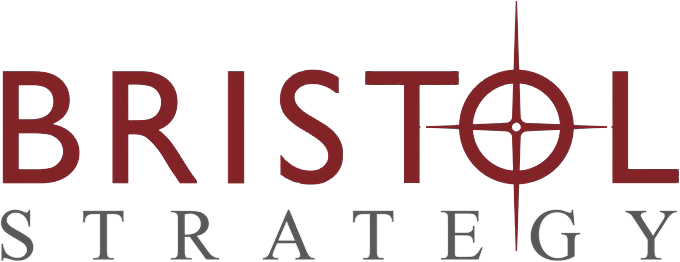Who’s your ideal donor? Excuse me, but it’s not as simple as “rich people.” And while we’re asking, who’s your ideal corporate sponsor? Who’s your ideal grant maker?
Oh. You don’t know. Well, that’s going to make it a lot harder for you to raise money. So is “we kinda sorta know, but we never wrote it down.”
Sorry, folks. If you haven’t analyzed, defined, and documented your ideal donor profile, you don’t have one. Here’s why you need one – and what goes in it.
REWARD!!! If you keep reading you can download a free kit containing all the instructions for crafting your own Ideal Donor Profile yourself. (Or improving the ones you already have.) The kit even contains a simplified version of the SMART Way Prospect Scorecard, so you can review your current donors and see which ones make the grade.
What’s an Ideal Donor Profile and Why Should I Care? Glad you asked. The Ideal Donor Profile (IDP for short) describes the hypothetical donor or other funder who is the perfect fit for your organization. They have money to donate, a track record of supporting philanthropic causes, and they love your mission. They’re generous with their time as well as their money, and they think you’re the best. You would clone them if you could.
On the other hand, if you don’t know or can’t describe your ideal donor, you will waste time, money, and peace of mind trying to raise enough to support your mission.
Ideal Donor Defined.
The IDP represents the donor (or other type of funder) most likely to fall in love with your nonprofit. Think about your current donors. Who would you like to clone? What makes them so “clone-able”? It’s not just their capacity for giving. It’s not even just their track record for giving. Maybe your ideal donor has a passion for what you’re doing, or their own life experiences make them sympathetic to your mission. Later on, we’ll show you how to figure that out.
The most effective IDP contains three components:
- The Ideal Donor Profile itself. The facts, like age, gender, location, wealth or giving capacity, experience as a volunteer, and so on. Most factual criteria are somewhere in the public record which includes prospect-research services, websites, and other databases. This info is (relatively) easy to find. The Prospect Scorecard calls these criteria the “Fact Statements.”
- The Donor Persona. This describes motivations for giving and related triggers, or “Value-Sought” characteristics. To figure these out requires talking to your favorite donors and asking them what inspires their philanthropic impulses. Once you’re spoken with a few of your favorite donors, you’ll know the language, the words and phrases your best donors today descr8be their reasons for giving to your org. Using donor language attracts prospective “ideal” funders to your nonprofit. The Prospect Scorecard calls these criteria the Value Statements.
- The Danger Signs. These are attributes you prefer to avoid, hints that the prospect might end up being more trouble than they are worth. Some examples are folks who are happy to chat with you (endlessly) but ghost you the second you mention asking for a donation. Or those who want you to name a building after them because they gave you $500. More on this below, under Danger Signs.
How Do I Figure Out Each Element?
- The Profile. Research your current donors. Conduct a wealth screening using prospect research services. Identify common characteristics of those you consider “ideal.” Discuss these with your team and choose factors you all agree on. Narrow your criteria down to no more than five desirable characteristics. (If you are just starting out with individual philanthropy, research other stakeholders like board members, advisors, etc.)
- Donor Persona. The best way to do this is to interview some of your favorite donors, the ones you’d like to clone. The Ideal Donor Kit (your REWARD!!!) includes a set of suggested questions that get people to open up and tell you about themselves and their charitable motivations. As few as five or six interviews will start to show you some common themes and phrases, but try to get to 10 or 20 interviews. You’ve now captured key motivations in the donor’s language.
- Danger Signs. These are always the most fun. Sit down with your team and ask, “what characteristics do we hate the most in donors?” Yeah, I know – it sounds so catty. But most of our clients LOVE this exercise! It’s OK to recognize the things you’d like to avoid. Narrow your list down to the five that are most likely to create a difficult (or worse) donor relationship.
How Do I Use My IDP?
Two ways: one for marketing and outreach, and the other for cultivating donors or other funders with the potential for making larger investments, typically over $5,000.
Marketing messages are effective when they motivate prospects to take action. And if you’ve done your Donor Persona well, those messages will specifically motivate those who match your Ideal Donor! What a notion. Otherwise, you end up sending messages into the void, getting few or no results, and wasting time, energy, and money you can’t spare. Messaging must “speak” to your donors. Please remember that every marketing message has to include a “call to action,” so be liberal with links back to your website where folks can sign up for your newsletter, download an article, schedule a tour, what have you.
Cultivating prospects is also a lot simpler when you have a complete IDP, especially one that includes Danger Signs. Cultivation goes through three phases: introduction, development, and commitment. BEFORE the introduction, use your factual profile to learn as much about the new prospect as possible based on public information. Next, when you first connect with the prospect, use your Donor Persona research and those suggested prospect-interview questions to establish rapport, and connect with the prospect. When you find a good match between the prospect and the first two elements of the IDP, and there are not too many Danger Signs, proceed with the cultivation and commitment!
By the way, experience suggests that it takes a lot more time, money, and hassle to acquire a funder who’s a poor match to your IDP. It costs a lot more to wrestle someone from the D list into giving to you. Those donors will probably give less money, be less likely to give again, and will give you all kinds of headaches in between.
What Will the IDP Do for Me?
A well-designed IDP provide you, the entire fundraising team, and everyone else with:
- A clear Value Proposition, also known as the characteristics of your mission that appeal to donors, prospects, clients, and other stakeholders. This makes it easier for you, your team, volunteers and board members to talk about your nonprofit with ease.
- Marketing messages that reflect your nonprofit’s Value Proposition and motivate prospects to donate money, time, or other value.
- Efficient mechanisms for expanding your following by gathering email addresses and converting them to newsletter subscribers, event attendees, participants in this or that, volunteers and everything else you can think of that shows subscriber interest.
- Helping your team convert those who show interest to those who write a check.
Does this require time and effort? Well yes, of course it does. On the other hand, if you don’t take the time and make the effort, this is what happens:
You will waste, time, money, and opportunity. If you don’t have an IDP, you and your team will probably chase anybody with an address and a pulse. You’ll waste unrecoverable time trying to find, cultivate, and solicit prospects who aren’t interested, don’t have money to give, or are overcommitted elsewhere. Our research shows that development officers could be risking the loss of as much as $1,000/hour trying to cultivate the wrong donors. Yikes!
Your website, social media, and email will fail to attract subscribers and donors. Ugh, more time, money, and effort down the drain. People check your website first when they want to find out what you’re all about, and how your mission changes the world for the better. Your web content and images MUST appeal to donors as well as to clients, potential board members, and even employees.
Let’s face facts here. If you can’t raise enough money, you’re not going to be able to serve those client, attract capable board members, or recruit and retain decent employees. Or pay those employees a living wage. Remember my favorite fundraising axiom: “No money? No mission.”
IDPs show the fundraising team how to open a conversation, find out if the prospect is worth further cultivation effort, and make it easy to ask for a gift. This makes it easier for your team to succeed. It gives them direction, clarity, and straightforward advice on how to each, acquire, retain and even upgrade donors most likely to become long-term, committed investors. Since turnover in the fundraising profession is so high (average tenure is only about 16 months), and it costs so much misery to bring in a new fundraising staff, doesn’t it make sense to make their jobs as easy and productive as possible?
Do Most Nonprofits Rely on IDPs?
Unfortunately not. Our Leaky Bucket Research shows that around 84% of nonprofits LACK documented ideal-donor profiles including motivations for giving. This is a very disturbing statistic. We are setting up our fundraising teams to fail.
Why in the world doesn’t every single nonprofit take the time to put together such profiles? Failing to do so means you have imposed obstacles to fundraising success. You’ve made it harder to attract, retain, engage donors. You’ve condemned your people to spending hours of their scarce, precious time to chasing phantoms, or DOAs, prospects who are Dead on Arrival. You’ve sentenced them to pursuing grant applications they won’t win, corporate sponsorships they won’t acquire, and donors who won’t give again. I know you’ve probably done all those terrible things unwittingly, but OUCH! Please don’t keep doing that. I like you too much, and you’ll make me cry.
Just imagine what would happen if your development officers, corporate relations team, grant writers, and volunteers understood which donors, sponsors, and grantors were “right” for them to bring in?
What You Can Do Now.
Start small, with one profile. Choose any funding type, preferably the most lucrative today: donors, grantor, corporate sponsor. Next, follow these steps in a group setting, with members of your fundraising team (including volunteers). Many minds make this process richer.
- Choose a few of your favorites.
- Decide what you like most about each one. You might end up “Frankensteining” your IDP with characteristics from several different candidates.
- For each category (factual profile, motivations profile, danger-sign profile), narrow down the lists to about five criteria each. Four is too few; more than seven is unwieldy.
- Write down what you’ve decided on – and save it!
The final step: distribute the IDP to everyone who is likely to encounter funding prospects, from the person who answers the phone to the board chair.
Fundraising is everybody’s job. So everybody needs to know how to do it – or at least know there are good, effective tools that help you do it with ease.

